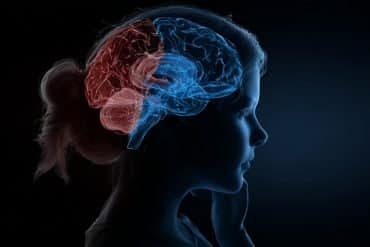Summary: A new study reveals adults with ADHD have an increased risk of developing nervous system, respiratory, musculoskeletal, and metabolic diseases. ADHD was also associated with a slightly increased risk of Parkinson’s disease, dementia, and cardiovascular disease.
Source: Karolinska Institute
Adults with ADHD are at higher risk of a wide range of physical conditions, including nervous system, respiratory, musculoskeletal, and metabolic diseases, according to a large register-based study from Karolinska Institutet published in The Lancet Psychiatry.
“Identifying co-occurring physical diseases may have important implications for treating adults with ADHD and for benefiting the long-term health and quality of life of patients,” says lead author Ebba Du Rietz, postdoctoral researcher at the Department of Medical Epidemiology and Biostatistics, Karolinska Institutet.
ADHD is a common neuropsychiatric disorder characterised by inattention, impulsiveness and hyperactivity, and commonly treated with stimulant therapy (methylphenidates or amphetamines).
Four million individuals studied
Previous studies suggest increased risk for a number of physical health conditions in adults with ADHD, but only a limited number of these associations have been thoroughly researched. Moreover, detailed treatment guidelines for adults with ADHD and co-occurring physical disease are largely lacking. Now, researchers at Karolinska Institutet have examined possible associations between ADHD and a wide range of physical diseases in adulthood, and whether genetic or environmental factors are involved.
Over four million individuals (full-sibling and maternal half-sibling pairs) born between 1932–1995 were identified through Swedish registers and followed between 1973–2013. Clinical diagnoses were obtained from the Swedish National Patient Register. The researchers examined the risk of 35 different physical conditions in individuals with ADHD compared to those without, and in siblings of individuals with ADHD compared to siblings of those without.
Associated with many conditions
Individuals with ADHD had a statistically significant increased risk of all studied physical conditions except arthritis. The strongest associations were found for nervous system, respiratory, musculoskeletal, and metabolic diseases. The diagnoses most strongly associated with ADHD were alcohol-related liver disease, sleep disorders, chronic obstructive pulmonary disease (COPD), epilepsy, fatty liver disease and obesity. ADHD was also linked to a slightly increased risk of cardiovascular disease, Parkinson’s disease and dementia.

“These results are important because stimulant therapy requires careful monitoring in ADHD patients with co-occurring cardiac disease, hypertension and liver failure,” says senior author Henrik Larsson, professor at Örebro University and affiliated researcher at Karolinska Institutet.
Underlying genetic factors
The increased risk was largely explained by underlying genetic factors that contributed both to ADHD and the physical disease, with the exception of nervous system disorders and age-related diseases. Full siblings of individuals with ADHD had significantly increased risk for most physical conditions.
The researchers now aim to study the underlying mechanisms and risk factors as well as the impact of ADHD on management and prognosis of physical diseases in adults.
Funding: The study was funded by the Swedish Research Council, the Swedish Brain Foundation, the Swedish Research Council for Health, Working Life and Welfare, Region Stockholm, StratNeuro (Karolinska Institutet), the European Union’s Horizon 2020 research and innovation programme, and The National Institute of Mental Health.
Ebba Du Rietz has served as a speaker for Shire Sweden AB outside the submitted work.
Henrik Larsson has served as a speaker for Evolan Pharma and Shire/Takeda and has received research grants from Shire/Takeda.
Co-author Marica Leone is an employee of Janssen Pharmaceutical Companies of Johnson & Johnson. See the scientific article for a complete list of potential conflicts of interest.
About this ADHD research news
Source: Karolinska Institute
Contact: Press Office – Karolinska Institute
Image: The image is credited to Karolinska Institute
Original Research: Open access.
“Mapping phenotypic and aetiological associations between ADHD and physical conditions in adulthood in Sweden: a genetically informed register study” by Ebba Du Rietz, Isabell Brikell, Agnieszka Butwicka, Marica Leone, Zheng Chang, Samuele Cortese, Brian M. D’Onofrio, Catharina A. Hartman, Paul Lichtenstein, Stephen V. Faraone, Ralf Kuja-Halkola, Henrik Larsson. Lancet Psychiatry
Abstract
Mapping phenotypic and aetiological associations between ADHD and physical conditions in adulthood in Sweden: a genetically informed register study
Background
Emerging evidence suggests increased risk of several physical health conditions in people with ADHD. Only a few physical conditions have been thoroughly studied in relation to ADHD, and there is little knowledge on associations in older adults in particular. We aimed to investigate the phenotypic and aetiological associations between ADHD and a wide range of physical health conditions across adulthood.
Methods
We did a register study in Sweden and identified full-sibling and maternal half-sibling pairs born between Jan 1, 1932, and Dec 31, 1995, through the Population and Multi-Generation Registers. We excluded individuals who died or emigrated before Jan 1, 2005, and included full-siblings who were not twins and did not have half-siblings. ICD diagnoses were obtained from the National Patient Register. We extracted ICD diagnoses for physical conditions, when participants were aged 18 years or older, from inpatient (recorded 1973–2013) and outpatient (recorded 2001–13) services. Diagnoses were regarded as lifetime presence or absence. Logistic regression models were used to estimate the associations between ADHD (exposure) and 35 physical conditions (outcomes) in individuals and across sibling pairs. Quantitative genetic modelling was used to estimate the extent to which genetic and environmental factors accounted for the associations with ADHD.
Findings
4 789 799 individuals were identified (2 449 146 [51%] men and 2 340 653 [49%] women), who formed 4 288 451 unique sibling pairs (3 819 207 full-sibling pairs and 469 244 maternal half-sibling pairs) and 1 841 303 family clusters (siblings, parents, cousins, spouses). The mean age at end of follow-up was 47 years (range 18–81; mean birth year 1966); ethnicity data were not available. Adults with ADHD had increased risk for most physical conditions (34 [97%] of 35) compared with adults without ADHD; the strongest associations were with nervous system disorders (eg, sleep disorders, epilepsy, dementia; odds ratios [ORs] 1·50–4·62) and respiratory diseases (eg, asthma, chronic obstructive pulmonary disease; ORs 2·42–3·24). Sex-stratified analyses showed similar patterns of results in men and women. Stronger cross-disorder associations were found between full-siblings than between half-siblings for nervous system, respiratory, musculoskeletal, and metabolic diseases (p<0·007). Quantitative genetic modelling showed that these associations were largely explained by shared genetic factors (60–69% of correlations), except for associations with nervous system disorders, which were mainly explained by non-shared environmental factors.
Interpretation
This mapping of aetiological sources of cross-disorder overlap can guide future research aiming to identify specific mechanisms contributing to risk of physical conditions in people with ADHD, which could ultimately inform preventive and lifestyle intervention efforts. Our findings highlight the importance of assessing the presence of physical conditions in patients with ADHD.
Funding
Swedish Research Council; Swedish Brain Foundation; Swedish Research Council for Health, Working Life, and Welfare; Stockholm County Council; StratNeuro; EU Horizon 2020 research and innovation programme; National Institute of Mental Health.







